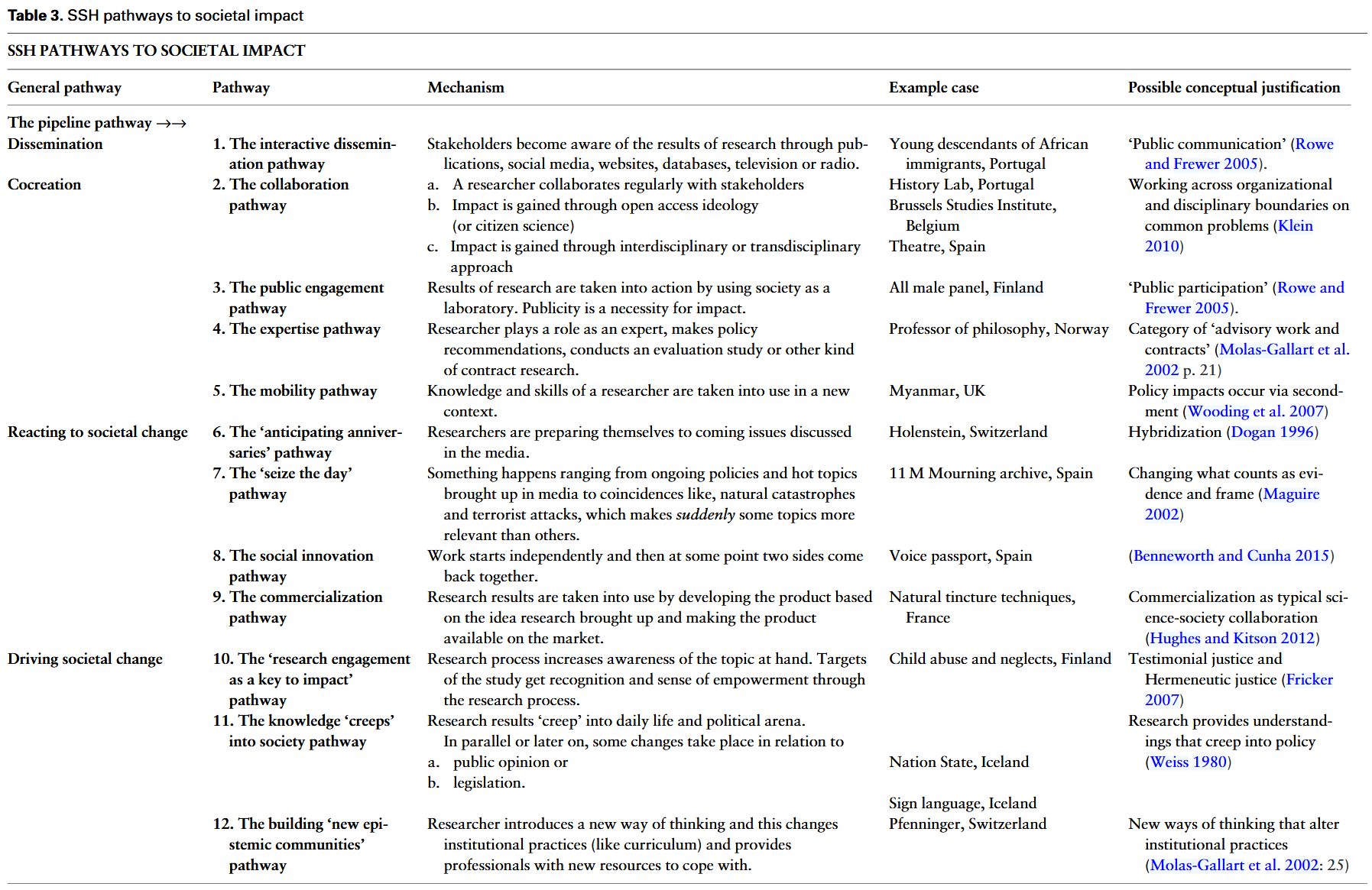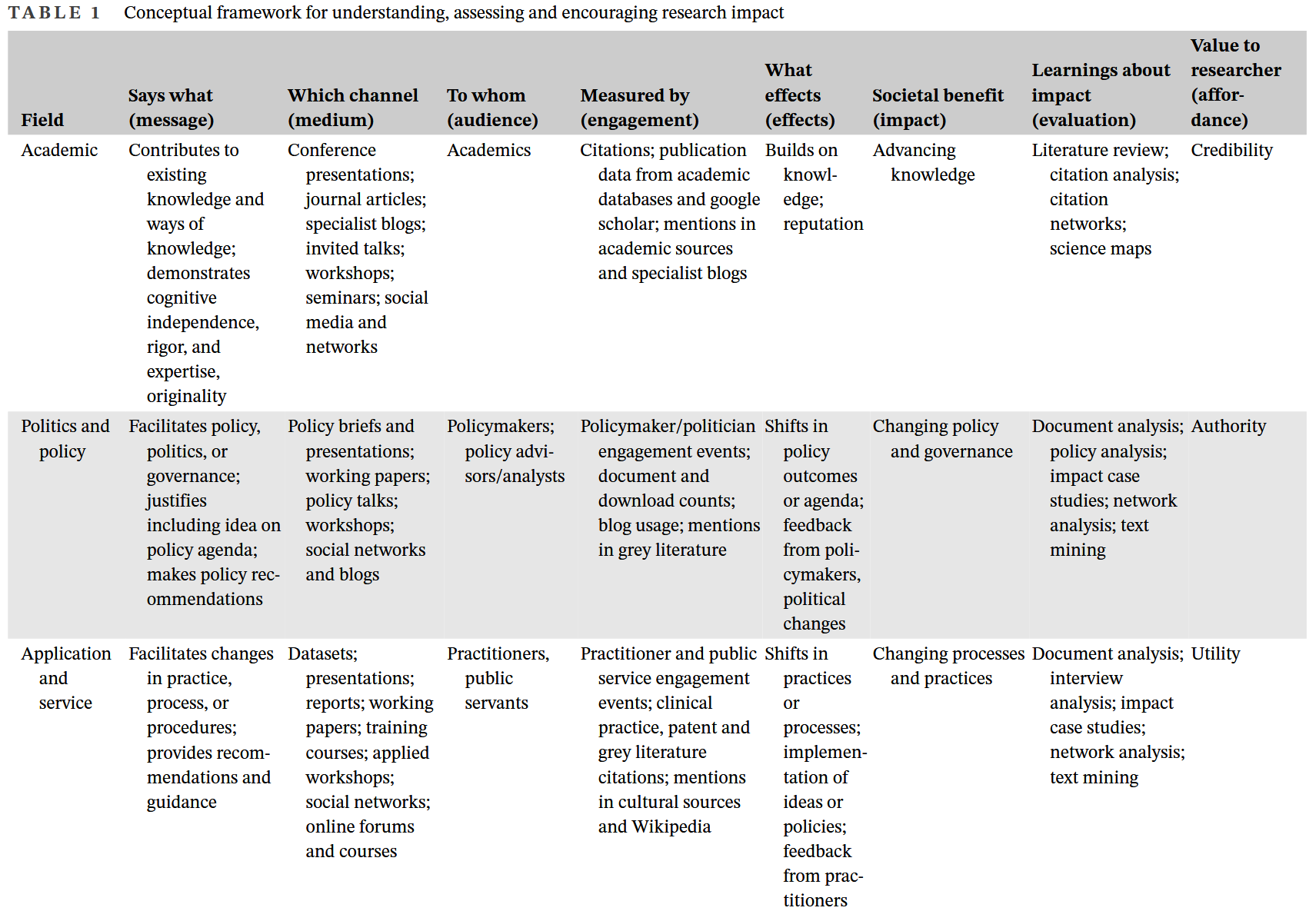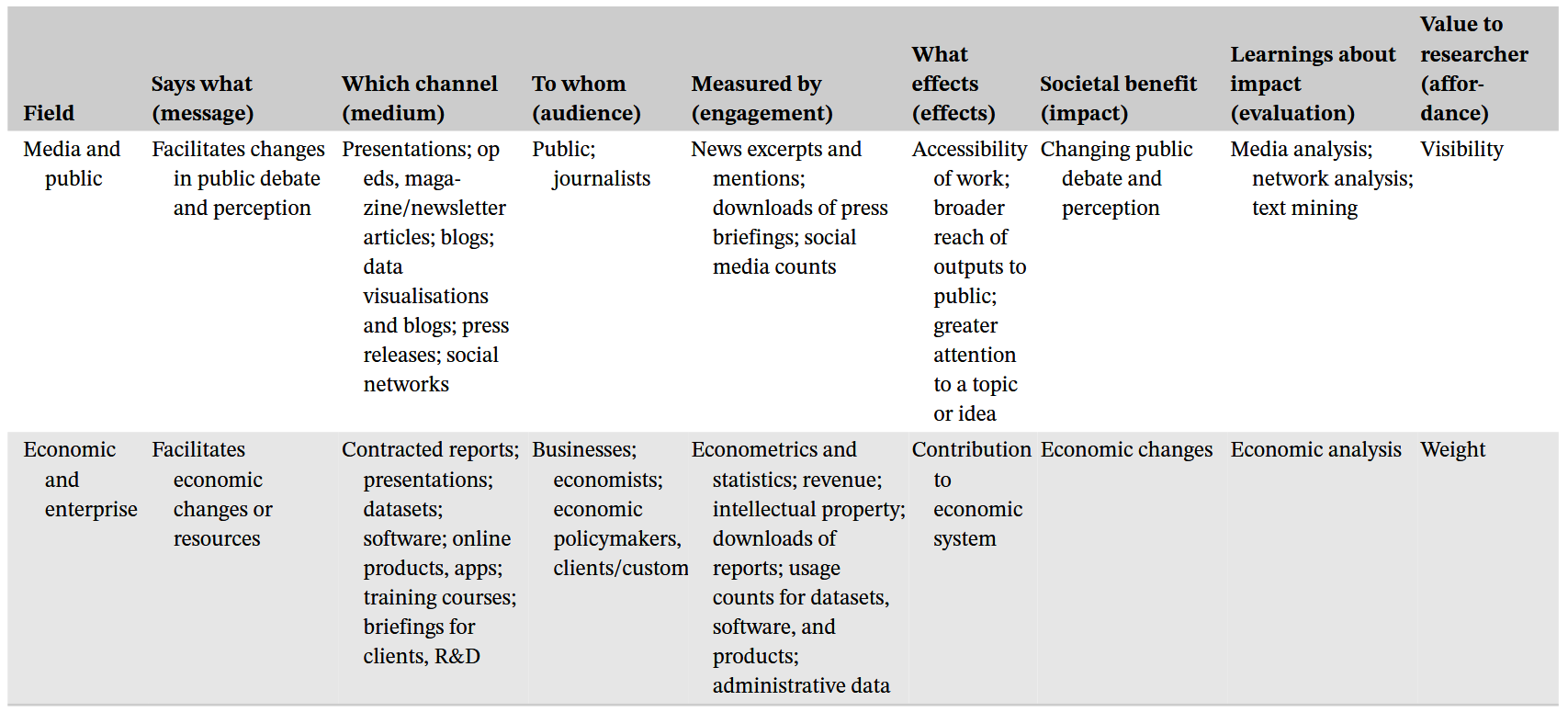Research Impact
Research Engagement and Impact: Faculty of Architecture, Building and Planning (unimelb.edu.au)

Muhonen, Reetta, Paul Benneworth, and Julia Olmos-Peñuela. “From Productive Interactions to Impact Pathways: Understanding the Key Dimensions in Developing SSH Research Societal Impact.” Research Evaluation 29, no. 1 (2020): 34–47. https://doi.org/10/gh68cf.


Williams, Kate, and Jenny M. Lewis. “Understanding, Measuring, and Encouraging Public Policy Research Impact.” Australian Journal of Public Administration 80, no. 3 (2021): 554–64. https://doi.org/10/g9gn2z.
Tasks for the impact plan, especially a public one (from Reed):
-
Do a stakeholder analysis, in which you:
- Identify who is likely to be interested in your research, or be able to use or benefit from it in some way.
- Identify the different motivations, needs, and interests of these groups, and the extent to which you can adapt messages from your research to be relevant to each one.
- Identify which stakeholders are likely to have the most influence over your ability to complete the research and generate your intended impacts.
-
Identify activities you can use with different stakeholders to communicate or (if possible) co-produce messages from your research. Tailor these activities to the needs and preferences of each stakeholder.
-
Identify indicators or targets that you can use to track whether or not your activities are actually taking you closer to your impact goals.
-
Consider the risks associated with achieving your intended impacts, and the activities you have chosen to reach them. What might not work or go wrong? Might there be unintended consequences? How can you mitigate these risks?
-
Ask what resources or help you might need to achieve your impacts and mitigate these risks.
-
Consider who will be responsible for each activity and when you will time these activities in relation to your research programme and the priorities and agendas of your stakeholder community.
Reed, Mark S. The Research Impact Handbook. St Johns Well: Fast Track Impact, 2016.
Literature on defining research impact
- CSIRO Impact Evaluation 2020 Guide
- ARC research impact principles and framework
References
Morris, Zoë Slote, Steven Wooding, and Jonathan Grant. “The Answer Is 17 Years, What Is the Question: Understanding Time Lags in Translational Research.” Journal of the Royal Society of Medicine 104, no. 12 (2011): 510–20. https://doi.org/10/c9wqr7.
Muhonen, Reetta, Paul Benneworth, and Julia Olmos-Peñuela. “From Productive Interactions to Impact Pathways: Understanding the Key Dimensions in Developing SSH Research Societal Impact.” Research Evaluation 29, no. 1 (2020): 34–47. https://doi.org/10/gh68cf.
Oancea, Alis, Teresa Florez Petour, and Jeanette Atkinson. “Qualitative Network Analysis Tools for the Configurative Articulation of Cultural Value and Impact from Research.” Research Evaluation 26, no. 4 (2017): 302–15. https://doi.org/10/gch5qj.
Reed, Michael S., Maurice Ferré, Jose Martin-Ortega, Robert Blanche, Ruth Lawford-Rolfe, Martin Dallimer, and Jonathan Holden. “Evaluating Impact from Research: A Methodological Framework.” Research Policy 50, no. 4 (2021): 104147. https://doi.org/10/gj9w3f.
Backlinks